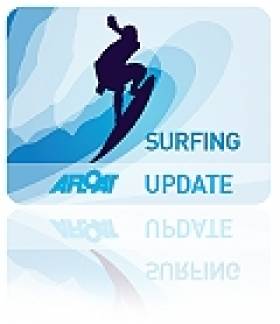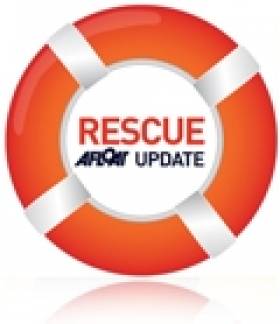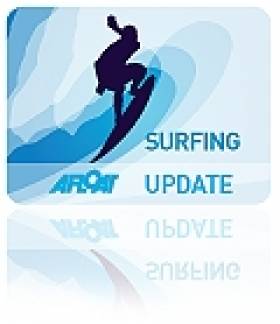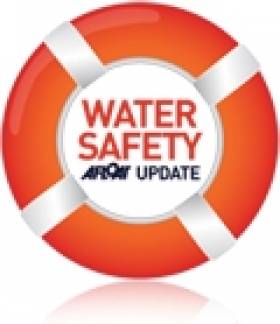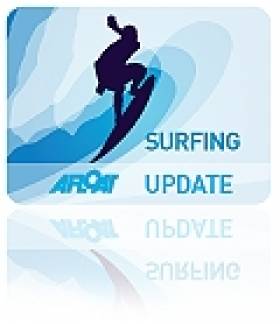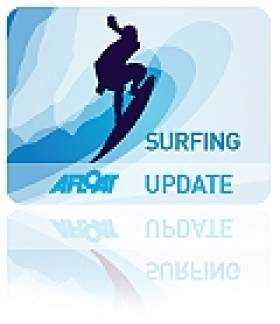Displaying items by tag: Surfing
Upcoming Festivals Show What's Up With Irish Surfing
#Surfing - The biggest cash prize in Irish surfing will be up for grabs again this summer at the Sea Sessions Surf and Music Festival.
As JOE.ie reports, the Expressions Session is set to attract the biggest surfing names in Europe and beyond to Bundoran from 19-21 June for the €3,500 purse claimed last year by 17-year-old GearOid McDaid.
But you won't have to wait that long for the next surfing celebration in Ireland, as the popular Shore Shots film festival returns to the Light House Cinema in Smithfield on 11-12 April.
This year's events includes a live talk hosted by Banter that aims to ask the question: 'What's the story with Irish surfing?'
Big wave luminaries such as Peter Conroy of the Irish Tow Surf Rescue Club, MagicSeaweed editor Ed Temperley and Brian Britton of the legendary Donegal surfing clan will be on hand to discuss what makes Ireland such a strong destination for surfing.
Jim Carroll's On The Record blog has more on the story HERE.
Champion Bodyboarder Airlifted From Clare Coastal Cliff
#Rescue - A world champion bodyboarder was airlifted to hospital from the base of a Doonbeg cliff earlier this week after suffering an injury in the water off the Clare coast.
The Clare Herald has more on the incident, telling how 36-year-old Australian bodyboard pro Ben Player was injured while bodyboarding near Spanish Point, then fell ill later in the day while watching friends surfing near Doonbeg.
Members of the Irish Tow Surf Rescue Club, who were in the area to keep watch for surfers taking on the challenging Riley's wave, rushed to Player's aid and raised the alarm.
It comes just says after a surfer was rescued from the base of the Cliffs of Moher.
As previously reported on Afloat.ie, the man was winched to safety by the Sligo coastguard helicopter after getting separated from a group of surfers and winding up on the rocks at the foot of the famous Co Clare cliffs.
Car Stolen While Couple Goes Surfing In Kerry
#CarTheft - Gardaí have asked the public to be on the lookout for a black Peugeot 207 that was stolen from a Northern Irish couple while they were surfing in Brandon Bay on Friday 13 March.
As The Irish Times reports, Kevin McCullagh and Oonagh Monaghan returned from their surf lesson on the Kerry beach to find that their car, which they had parked nearby on the quiet strand, was gone - and with it all their belongings.
Tralee gardaí are seeking the whereabouts of the black Peugeot 207 hatchback with the UK registration JHZ 7328.
Surfer Rescued From Cliffs Of Moher
#Rescue - The Irish Independent reports that a surfer has been rescued after getting trapped at the foot of the Cliffs of Moher.
What began a search operation for a missing surfer yesterday evening (Saturday 14 March) soon became a rescue effort when the man was found ashore at the base of the 700ft cliffs in Co Clare.
The Sligo coastguard helicopter was able to winch him abroad and airlift him to hospital just before midnight. More HERE.
Champ Lashes Out At Irish Pro After World Surf League Opener
#Surfing - Irish-Aussie surfer Glenn Hall says there's "nothing personal" between him and world surfing champion Gabriel Medina after the latter's outburst over his elimination from the World Surf League season opener.
As the Sydney Morning Herald reports, the Brazilian was seething after an interference call in his heat against Hall confirmed his elimination from the third round.
Medina expressed his frustration at the more than a week spent waiting for suitable waves at Snapper Rocks on Australia's Gold Coast before surfing could even begin.
He also lashed out at Hall for swearing at him in the water - but the New South Wales native dismissed the situation as "a bit of a tight heckle".
Hall, who was born in Australia but competes for Ireland due to his family heritage, is the lone Irish entrant in the new World Surf League, the successor to the ASP World Tour.
Ride Waves In The Wake Of Westlife – Or Mix Yoga With Your Surfing
#Surfing - The members of Westlife are well known for hailing from the 'Land of Heart's Desire' – Co Sligo. But did you know one of the group, Kian Egan, is a keen surfer?
It should make sense, when you think about it, with Mullaghmore Head attracting the world's top big wave surfers for many years now, and Strandhill producing world-class waveriders and bodyboarders.
And thanks to this travelogue in The Irish Times by Seamus McGoldrick, we can learn a lot more about the Westlife singer's passion for the waves on a surfing trip to the Canary Islands organised by childhood friend Allan Mulrooney.
However, if bumming around Fuertaventura in search of the most primo surf doesn't sound like your kind of holiday, perhaps a trip combining surfing with yoga might do the trick.
In the Irish Independent, Justine Carberry writes on her laidback getaway to a small fishing village in Morocco called Taghazout, where Irish couple Michelle and Michael Moroney run a yoga retreat adjacent to some of the best surfing the North African country has to offer.
Carberry's week-long stay also took in the attractions Morocco is perhaps best known for, such as the bustling medina markets and fragrant, vibrant cuisine.
But if you can't find the time to get that far away, the Moroneys also run yoga and surfing retreats in Ireland - with the latest taking place near the Cliffs of Moher, as The Irish Times reports.
Beach Safety Programmes For Northern Ireland Schools
#WaterSafety - The RNLI is encouraging primary schools in Northern Ireland to sign up for two of its beach safety education programmes when they get under way next month.
Running from March to June, Meet the Lifeguards and Hit the Surf aim to educate pupils in P5-P7 on the importance of beach safety in a fun and practical way.
Meet the Lifeguards gives pupils the opportunity to participate in an informative and interactive session when RNLI lifeguards visit their school. The 45-minute presentation focuses on equipping pupils with key safety advice that they can put to use when they visit a beach with family and friends.
Pupils will learn more about the RNLI, the charity that saves lives at sea and the role of the RNLI lifeguard on the beach. They will be educated on what the different beach safety flags and signs mean; the safety of using inflatables while swimming; and how to identify natural and man-made hazards. They will also learn about body boarding and surfing safety, rip currents and how to escape them and safety information on tides and waves.
Hit the Surf, meanwhile, offers a unique opportunity for school children to get practical lessons in lifesaving and beach safety at one of the 10 RNLI lifeguarded beaches located on the north coast and in Co Down.
The session, which lasts two-and-a-half hours, includes a theory lesson on staying safe at the beach and the role of the RNLI and its lifeguards. It's followed by practical lessons in lifesaving and surf-based skills while building pupils confidence in the sea. The pupils will also learn about local hazards and the beach environment.
RNLI lifeguard supervisor Tim Doran is encouraging schools to get involved. "Education and prevention are an important part of the RNLI’s work and programmes such as Meet the Lifeguards and Hit the Surf enable us as lifeguards to deliver important beach safety advice in a way that is both informative and engaging," he says.
"We hope that pupils can then take what they learn, share it with family and friends and use it to have fun in a safe way when they visit a beach."
Last year, RNLI lifeguards in Northern Ireland responded to 251 incidents, assisting 284 people.
"With the profile of the beaches changing after winter storms, the RNLI lifeguards were kept busy in 2014," says Doran. "With rip currents and changing landscapes, the lifeguards engaged in a large amount of preventative work, speaking to beach users and advising of the safest places to swim."
For more information on how to book your school onto an RNLI education programme, please contact 028 7087 8492 or email [email protected]
Easkey Britton's Pioneering Surf Trip To Iran Inspires New Film
#Surfing - The inspirational story of Easkey Britton's pioneering surfing trip to Iran is now part of a new film exploring how the sport is empowering women in the Middle East.
Two years ago, Afloat.ie reported on Britton's adventures in southern Iran, where she was filmed by French documentary maker Marion Poizeau as she took to the waves in a full-length 'hijab swimsuit' – becoming the first woman to surf in the country's waters.
Since then she's set up Waves of Freedom, with the aim of encouraging the women and youth of the remote Baluchistan region of Iran to get into surfing.
And she's been joined by Poizeau, whose new documentary Into the Sea weaves Britton's story together with those of two women her trip inspired: Iranian snowboarder Mona and diver Shalha.
Both have taken Britton's lead in introducing surfing to everyone in Iran, but especially women and girls – sharing "a belief in the power of sport to break down barriers and connect with others".
The 52-minute films is available to download or watch on demand at Vimeo.
Portrush Brothers Pioneer 'Next Generation' Surfboards
#Surfing - "Next generation" surfboards are the stock-in-trade of Portrush brothers Chris and Ricky Martin, whose Skunk Works business gets The Irish Times profile treatment this week.
The brothers' company is a first for Northern Ireland, let alone its Coleraine base, but they're taking advantage of a growing thirst for surfing across the island's top surfing spots.
That's particularly strong on the North Antrim coast – home turf of big wave surfer Al Mennie – and the northwest, from Donegal to Sligo, where the biggest waves attract the best in the world.
And the Martins' revolutionary concept – a custom method of manufacturing stronger foam surfboards to withstand the rigours of the waves – is appealing far beyond the North, with the brothers fielding interest internationally from the industry's leading lights.
The Irish Times has much more on the story HERE.
Surf School Boss Tells How He Swapped Media Life For The Waves
#Surfing - With surfing hotspots like the magnificent Mullaghmore bringing the cream of the world's wave-riding crop to Ireland's coasts, it should be no surprise that some enterprising individuals see opportunity in meeting the growing demand for the sport.
The Irish Independent profiles one of these entrepreneurs, Mark Mulvihill, a former freelance video editor with RTÉ who made a massive career change in setting up his own surf school in Ballybunion, Co Kerry more than a decade ago.
Back then Ireland's surfing industry, if one could call it that, was a mere fraction of what it is today.
But Mulvihill saw the potential that went past unnoticed to most, and these days works with four other surf instructors over the peak summer months training everyone from serious starters to school children and even stag and hen parties.
The Irish Independent has more on the story HERE.


























